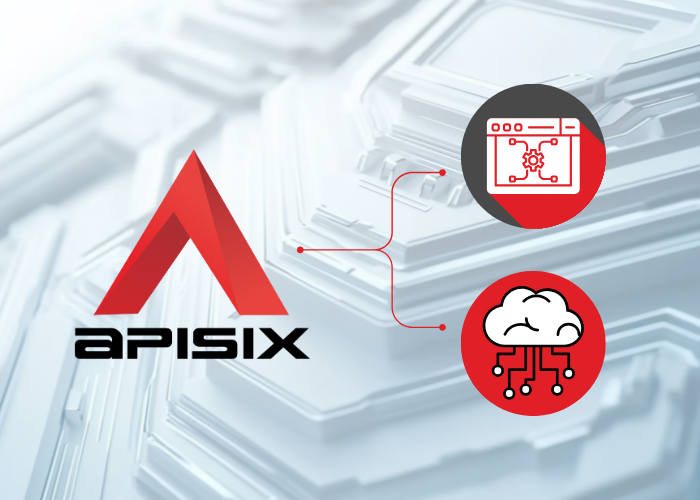Choreo WSO2: What is it, how does it work, and what are its advantages?
In this article we’re talking all things Choreo WSO2. Read on to discover what it is, how it works, and its advantages. Let’s dive in!
What is Choreo WSO2?
Choreo by WSO2 is a Digital Platform as a Service (DPaaS) used for developing, publishing, monitoring, and managing APIs. Simply put, Choreo is a low code, native engineering platform for developers.
What makes Choreo different?
Choreo differs from traditional iPaaS solutions, as it focuses on building modern enterprise applications using cloud-native engineering technologies and practices. In addition, Choreo supports both low-code and pro-code development approaches, while providing a real iPaaS-like experience.
Choreo takes a different approach by continuously generating Ballerina code from the low-code editor, that is the actual code that runs once it’s executed. In this case, there are zero translations between the code and the actual code runs. This means that a developer is able to edit the generated code, and the diagram in the low-code is modified accordingly. Sequence diagrams can use three fundamental Ballerina language concepts to deliver the graphical representation of the code.
One of the features that differentiates Choreo from other technologies is that it uses existing WSO2 technologies to provide customer identity and access management (CIAM) , in addition to API management and integration capabilities. What’s more, as with any iPaaS, Choreo provides a readily available hosted data plane and user control plane. However, Choreo also supports a hybrid mode by having the data plane run on the customer’s preferred Kubernetes implementation.
You can use the Choreo online editor to create and design all of your different services and APIs with the code automatically be generated for you. It’s a fast, simple and secure way to create integrations, build microservices, manage APIs, and build an API marketplace in just a few hours or days, as opposed to the weeks or months that would normally take. And if that wasn’t enough, it is also low code, making it easier for developers to use.
You also have all the tools you need in one platform. For example, Twilio, email, SMS authentication, GitHub, Salesforce, Google Sheets, Google Drive, Slack etc.
In the next section we’re going to explore the advantages of using Choreo.
What are its advantages and key features?
Here’s a list of advantages that Choreo offers:
- Supports low-code and pro-code – Productivity and flexibility can be achieved through low-code and pro-code through code-based development which makes Choreo a perfect experience for developers.
- Inclusive cloud-native engineering – Choreo provides a range of technologies to build cloud-native applications using industry best practices. These include CI/CD, connectors, and API management among others.
- Supports rapid development – The built-in features allow developers to build applications, test, and deploy them into production environments in just a few hours as opposed to several months. The whole process is smooth, and the quality of the product is not compromised for speed in any case.
- Deep observability – The deep observability features enable users to avoid any kind of failure with the correct monitoring and also alerts. In the event that something goes wrong, there is a feature to recover data quickly which makes Choreo a top choice.
- Unique developer experience – This feature is a unique development experience. The source code also generates a diagram at the same time as the code and displays it side by side. This means that as you modify the diagram, the code automatically corrects itself, and vice versa. Not only that, but it also provides an AI-assisted experience that provides insights into the performance of the code while generating it.
- Security and governance – You can make those two features an integrated part of your DevOps automation via additional add-on processes that add manual steps and also delays.
- Marketplace & developer portal – This is the place where developers share their services with other developers within and across organizations. The benefit of it is to reuse existing services and improve them based on user feedback. That allows teams to share the API endpoints with internal and external users that are interested in building applications using the same endpoints.
Choreo not only provides all the features above, but it also provides the features available in a traditional iPaaS solution, which makes it even more unique. In the next section we will focus about the common advantages of aPaaS, iPaaS, and Choreo.
Common advantages of aPaaS, iPaaS, and Choreo
In this section we explore the common advantages of aPaaS, iPaaS, and Choreo.
- Accessibility — The platforms use cloud infrastructure to run, which makes these solutions highly accessible.
- Scalability — Users will not need to worry about scaling applications manually as they provide automatic scalability based on usage.
- Easier Infrastructure Management — The user only needs to worry about managing the applications and tools.
- Compliance — The platforms are managed by the vendor, which means they can make the solutions match the required standards. Some examples of this include PCI DSS, FEDRAMP, SOC2, and HIPAA.
Conclusion
Choreo is used by nearly 10,000 developers worldwide and there is a reason for that. It’s aimed at professional developers but even if you just want to create a simple API microservice and be able to easily deploy and test it and view all of the statistics, Choreo is definitely something worth checking out!
Are you ready to get started? Want to learn more? If you need help in your organization with Choreo, don’t hesitate to contact us!







